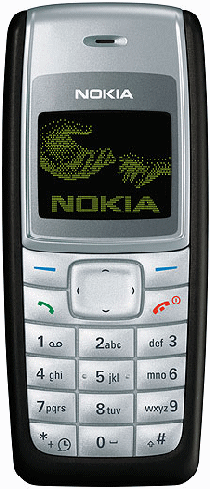The world’s leading mobile phone seller today laid out its strategy to
bring mobility to hot-growth markets with the introduction of the Nokia 1110
and Nokia 1600 — two phones aimed at first-time users in developing regions, such as Africa.
The Nokia 1110 and Nokia 1600 join several of the Finnish phone maker’s
entry-level products, which emphasize ease-of-use, reliability and
affordability, as well as the technological features that reduce the total cost of mobile ownership for consumers, the company said in a statement.
“Nokia has been instrumental in propelling the industry towards the goal
of 3 billion people connected globally by 2010, because mobility offers so
many benefits, such as creating employment, opening new channels of
communication for social services and even helping to stimulate economies,”
Juha Pinomaa, vice president of Nokia Mobile Phones, said.
Nokia expects the African subscriber base to reach 100
million by the end of this year and to double to 200 million by 2009.
Both models will be rolled out during the third quarter of 2005.
The handsets are easy to use and have highly intuitive user interfaces
that make use of graphical icons and large font sizes, Nokia said.
Africa, one of the fastest-growing markets in mobile communications, is
high on many mobile phone makers’ development plans these days. Nokia says it is
continuously strengthening its presence on the continent and is confident to
have the right products and solutions to meet the unique needs of the new
growth markets.
“At Nokia, we firmly believe the key to success in new growth markets
like Africa, is to work closely with mobile operators to reduce the overall
cost of mobile phone ownership for consumers,” Pinomaa said. “It is equally
important for us to work closely with government bodies to overcome possible
barriers that are preventing forward momentum.”
Pinomaa also said with the right combination of mobile phones, network
solutions services and a regulated environment, Nokia envisions a mobile
landscape where operators can profitably offer mobile services to consumers
for as little as $5 per month.
“When the cost of mobile services becomes this affordable, we foresee the
growth curve in growth markets accelerating sharply,” he said.
New features incorporated into phones include a Speaking Clock with
Alarm, which announces the time in the user’s local language, as well as
large fonts to allow greater readability.
The phones use MR (Adaptive Multi Rate) technology that enables operators
to add voice capacity within their networks smoothly and cost-efficiently,
Nokia said.
They also feature a Demo Mode, an on-screen visual guide of
primary phone functions for first-time mobile phone users. The demo guide
also allows consumers to play the pre-installed games or hear the Speaking
Clock without a SIM card inserted into the phone.
At the same time, Nokia unveiled the Nokia Prepaid Tracker, the world’s
first completely network-based solution that enables prepaid users to
monitor their account balances on the handset display after each call.
Nokia says the majority of mobile subscribers in new growth markets tend
to opt for prepaid services. The Prepaid Tracker’s up-to-the-minute account
information eliminates the expense of contacting the operator for basic
balance inquiries.
 |
Nokia 1110 Source: Nokia |


